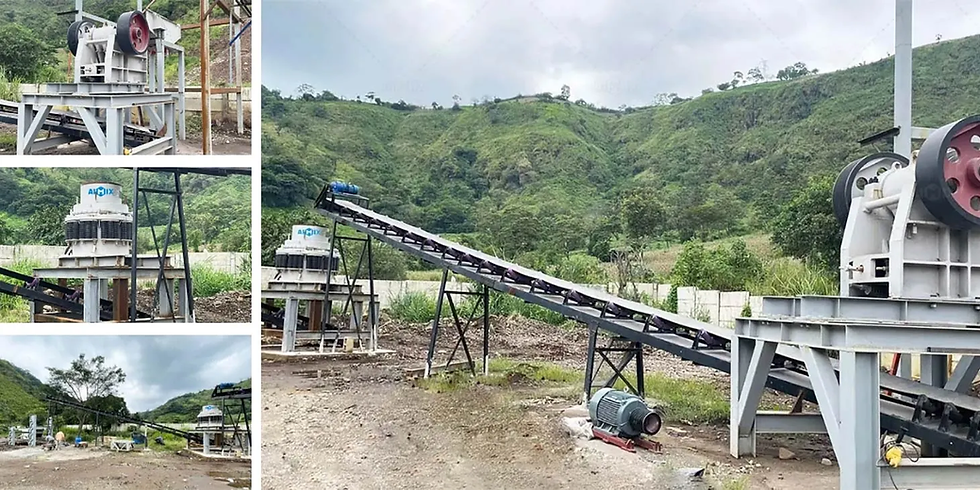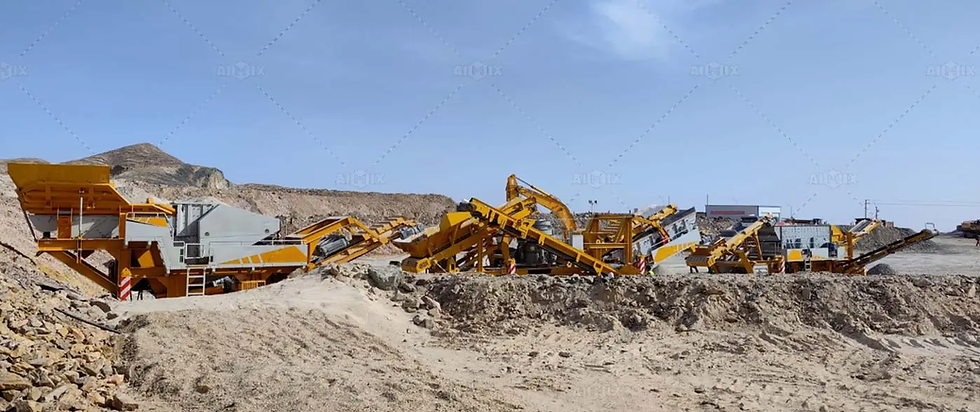How Do Mobile Impact Crushers Excel in Secondary and Tertiary Crushing Applications?
- aimixgroup china
- Mar 13
- 3 min read
Mobile impact crushers have transformed secondary and tertiary crushing processes, providing precision, efficiency, and adaptability across various aggregate and recycling applications. These machines, designed for high-impact fragmentation, ensure that material is reduced to optimal sizes while maintaining consistent gradation. Equipped with advanced rotor systems and energy-efficient components, the mobile impact crusher enhances productivity while minimizing operational costs. Their ability to maneuver seamlessly across job sites makes them indispensable in modern construction and mining projects.
Optimized Performance in Secondary Crushing
High Reduction Ratios for Uniform Aggregate Sizing
Secondary crushing demands precision, as material from primary crushers must be refined into well-calibrated aggregate. Mobile impact crushers excel in this role due to their ability to achieve exceptional reduction ratios, effectively transforming large chunks into evenly-sized material. Unlike jaw crushers, which rely on compressive force, impact crushers utilize high-speed rotor impact to break down stone, ensuring a consistent output.

The kinetic energy generated by heavy-duty hammers and rapid rotor rotation enhances fragmentation, resulting in high-quality aggregates suitable for road construction, concrete production, and asphalt mixing. These machines eliminate excessive elongated particles, producing cubical-shaped material that meets stringent industry specifications.
Advanced Rotor Designs for Efficient Material Fragmentation
The heart of any impact crusher lies in its rotor assembly, a carefully engineered component designed for maximum energy transfer and impact force distribution. Modern mobile impact crushers incorporate multi-stage rotors with adjustable blow bars, allowing operators to modify impact intensity based on feed material characteristics.
Enhanced rotor balancing reduces vibration and wear, extending machine longevity while ensuring continuous, high-efficiency crushing. The strategic placement of impact plates enhances material redirection, ensuring that even abrasive rock types like granite and basalt are processed with minimal downtime.
Precision and Versatility in Tertiary Crushing
Adjustable Impact Force for Refined Material Shaping
Tertiary crushing is where impact crushers truly demonstrate their superiority, excelling in fine material refinement. These machines are equipped with adjustable impact aprons, allowing operators to fine-tune crushing intensity for specific material hardness and desired product specifications.
Unlike cone crushers, which rely on compression, impact crushers introduce shear and attrition forces, ensuring that final products exhibit smooth texture, excellent surface integrity, and uniform particle distribution. The ability to produce premium-grade sand and finely crushed aggregates makes these crushers indispensable in modern infrastructure projects.
Integration of Screening Units for Superior Product Gradation
To further enhance their efficiency in tertiary applications, many mobile impact crushers integrate vibrating screen modules, allowing for real-time material separation. These screens classify crushed material into different sizes, ensuring that oversized particles are recirculated for further processing, optimizing final product quality.
This built-in screening capability eliminates the need for additional processing equipment, streamlining operations and reducing material handling costs. The result is a highly efficient, self-contained crushing system capable of delivering market-ready aggregates in a single pass.

Mobility and Operational Efficiency
Compact Design for Rapid Site Transitions
One of the most significant advantages of mobile concrete crusher for sale is their compact yet powerful design, allowing for seamless relocation between job sites. Unlike stationary crushers, which require extensive setup and foundation work, mobile units can be deployed within minutes, ensuring minimal downtime and enhanced project flexibility.
Hydraulic folding conveyors and telescopic tracks further facilitate mobility, enabling crushers to adapt to varied terrains, confined spaces, and remote locations. This level of maneuverability is particularly beneficial in urban construction projects where space constraints demand highly adaptable crushing solutions.
Fuel Efficiency and Automated Control Systems
Operational efficiency in mobile impact crushers is further enhanced by fuel-saving technologies and intelligent automation. Hybrid power systems integrate diesel-electric or full-electric drives, reducing fuel consumption while lowering environmental impact. These machines optimize power usage, ensuring that energy is only utilized when necessary, translating to substantial cost savings over prolonged operation.
Automated control systems allow for real-time performance monitoring, with sensors detecting feed rate variations, rotor speed fluctuations, and potential overload conditions. These advanced features enable operators to make instantaneous adjustments, preventing costly breakdowns and maintaining consistent production output.
Mobile impact crushers have revolutionized secondary and tertiary crushing, delivering precision, efficiency, and flexibility in material processing. Their ability to achieve high reduction ratios, fine material shaping, and seamless mobility makes them a cornerstone of modern aggregate production and recycling industries. As technological advancements continue to refine these machines, their role in sustainable and cost-effective crushing solutions will only expand further.



Comments